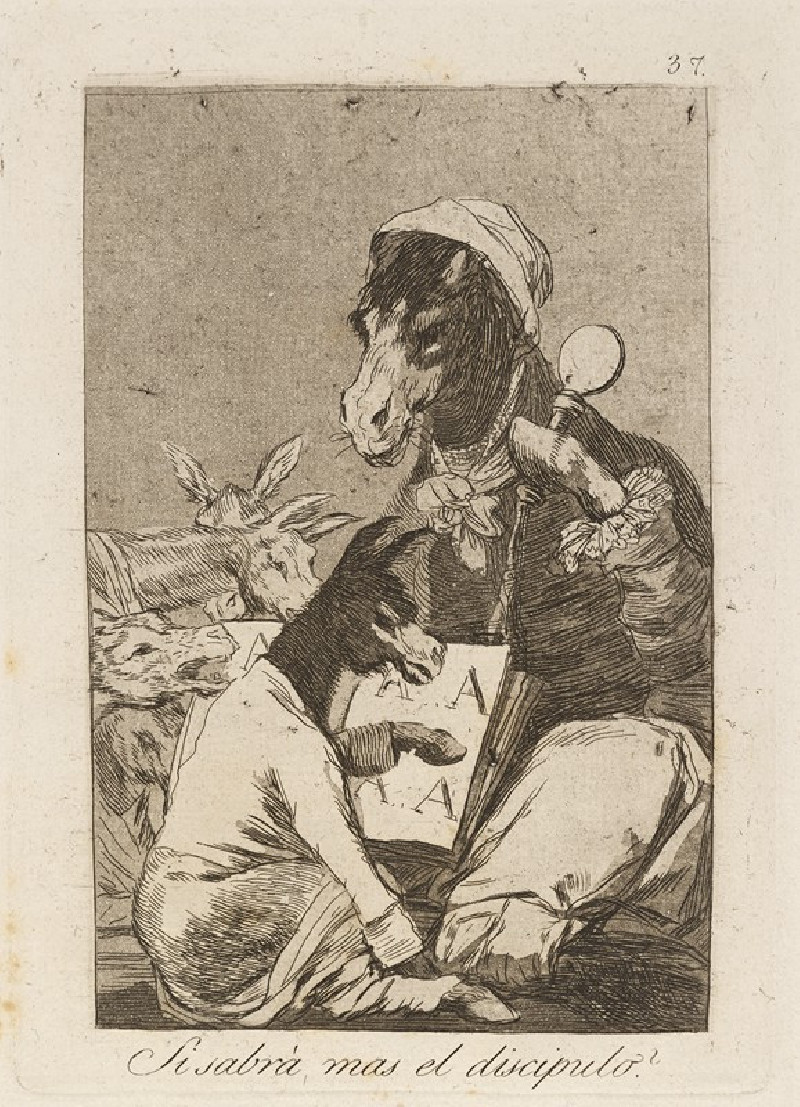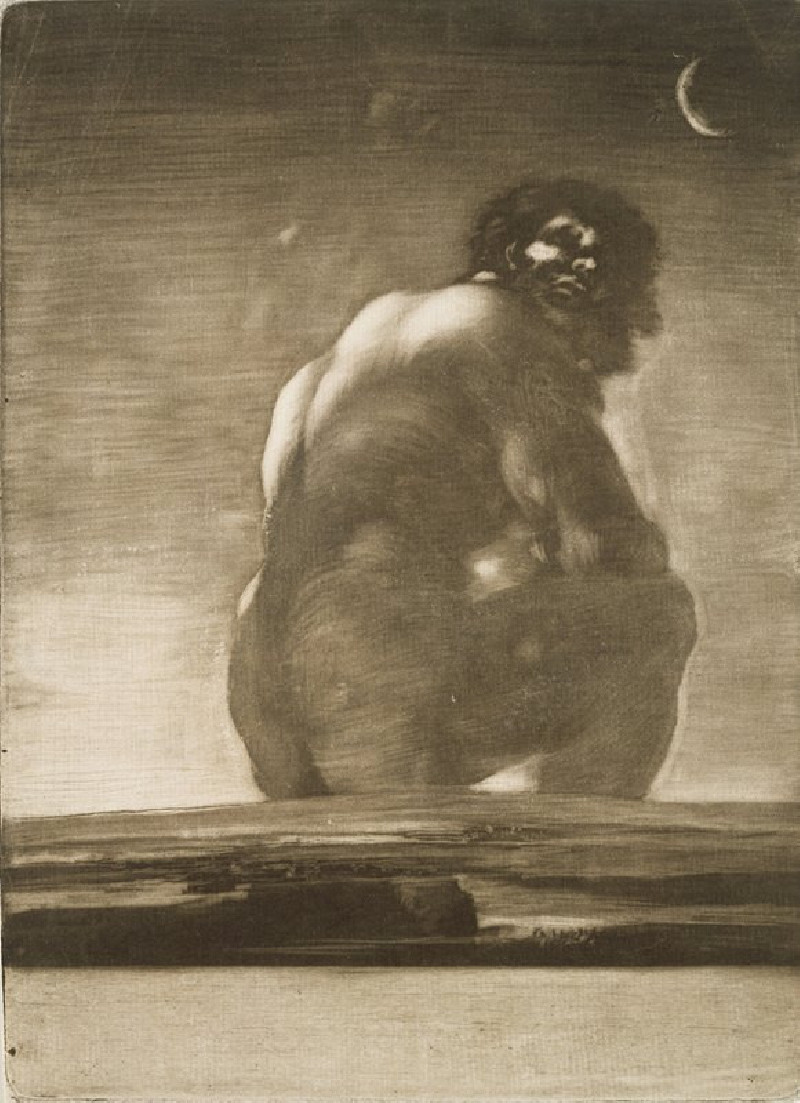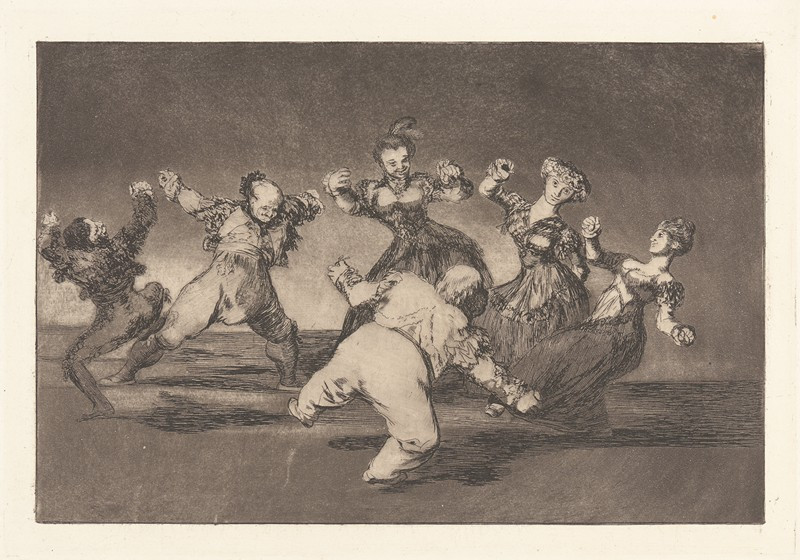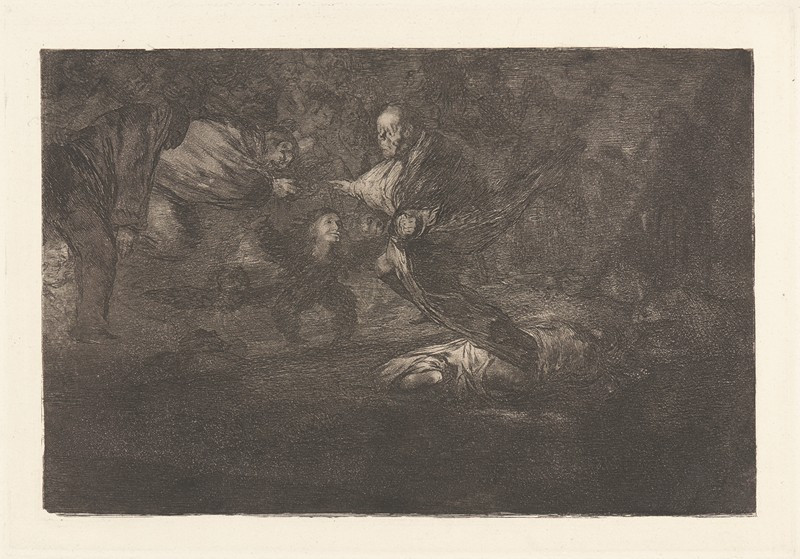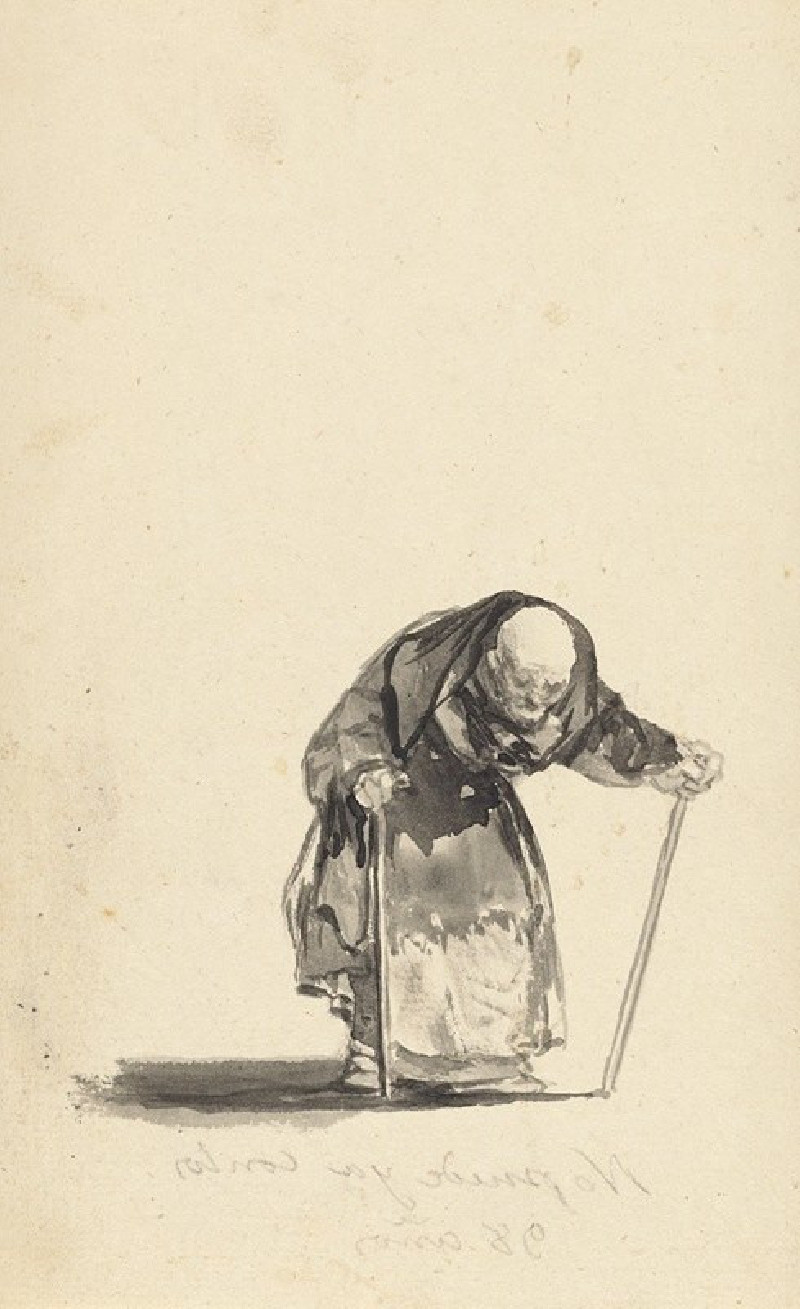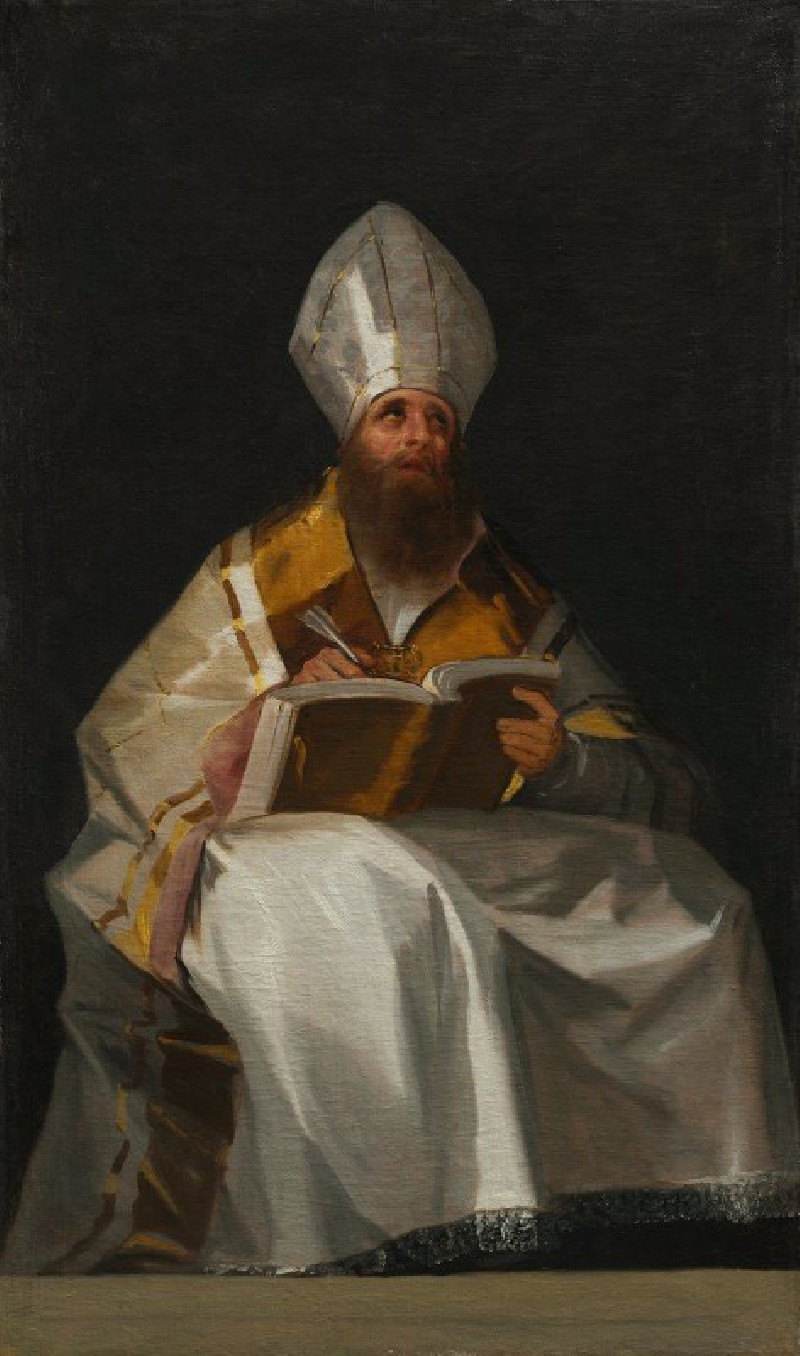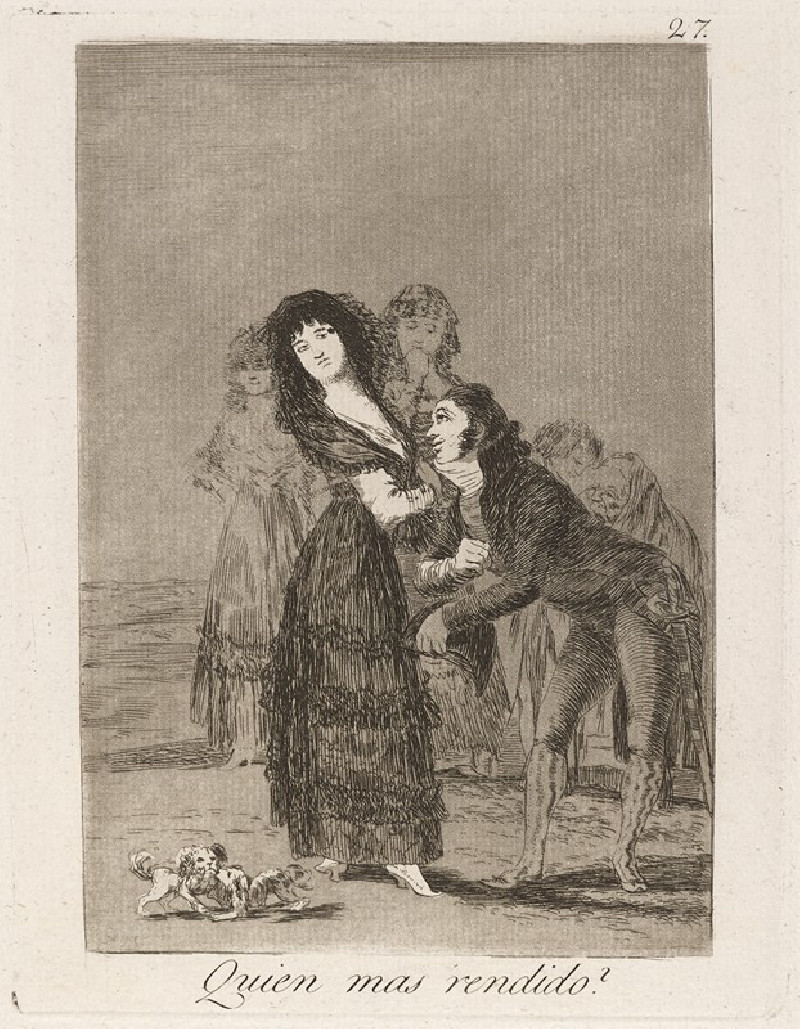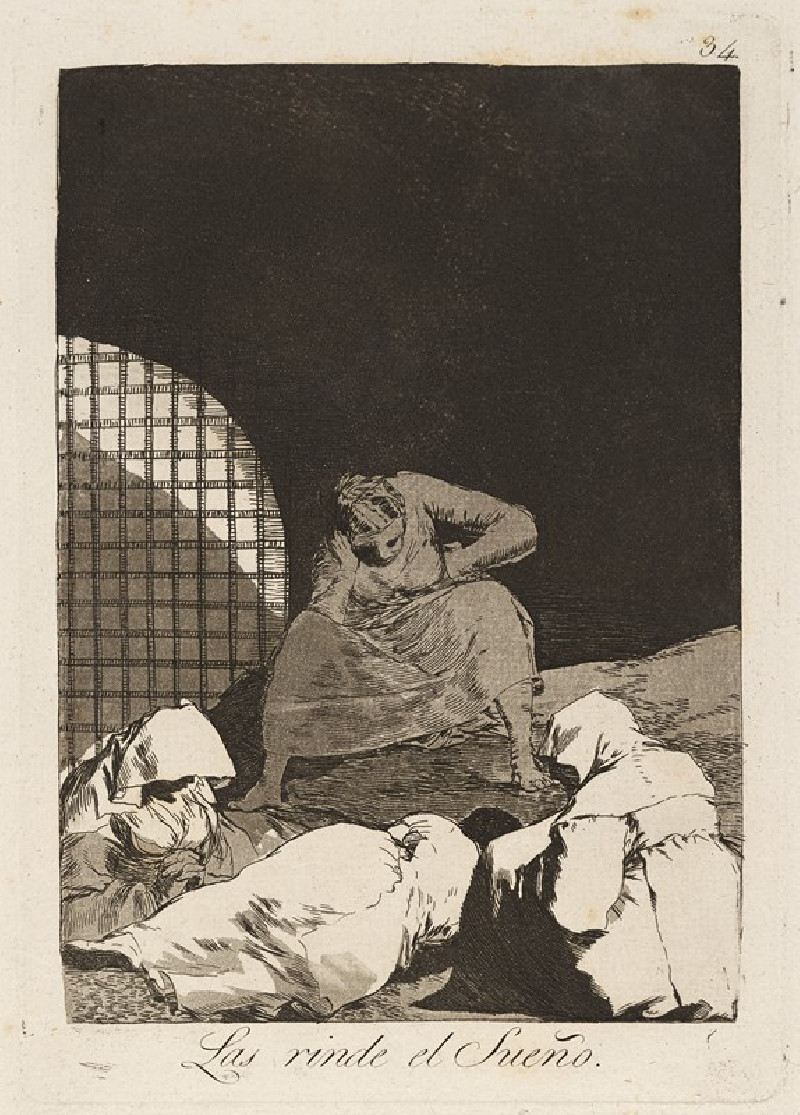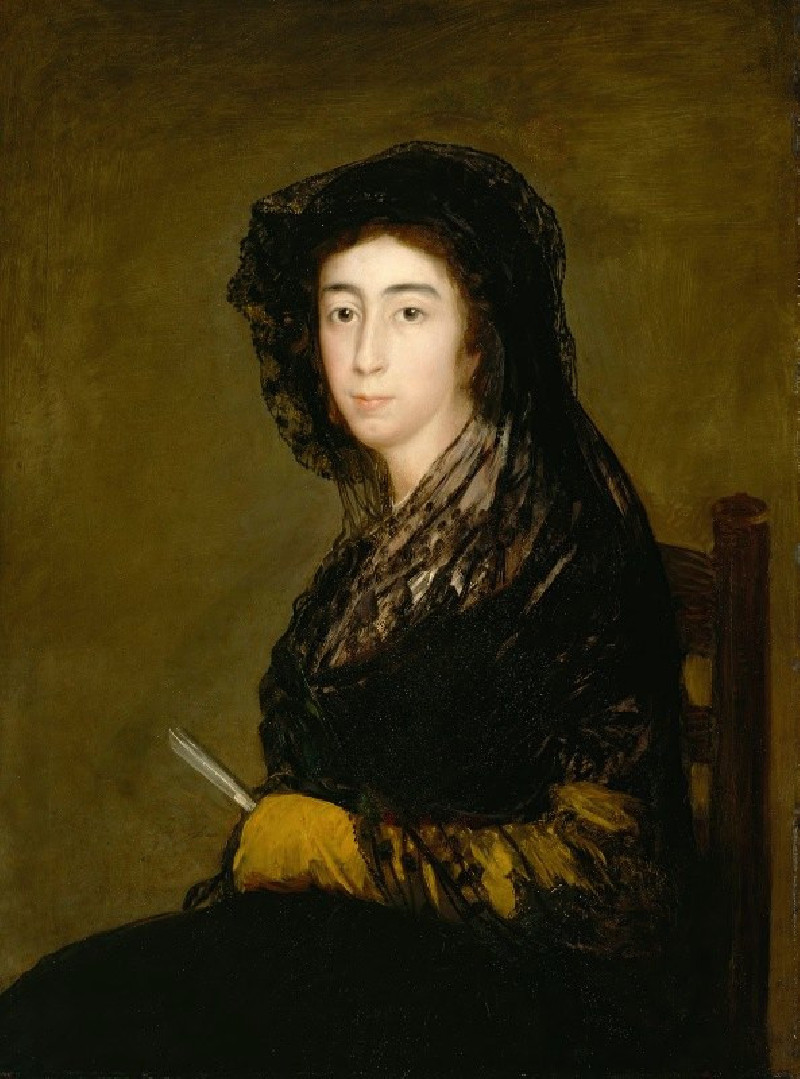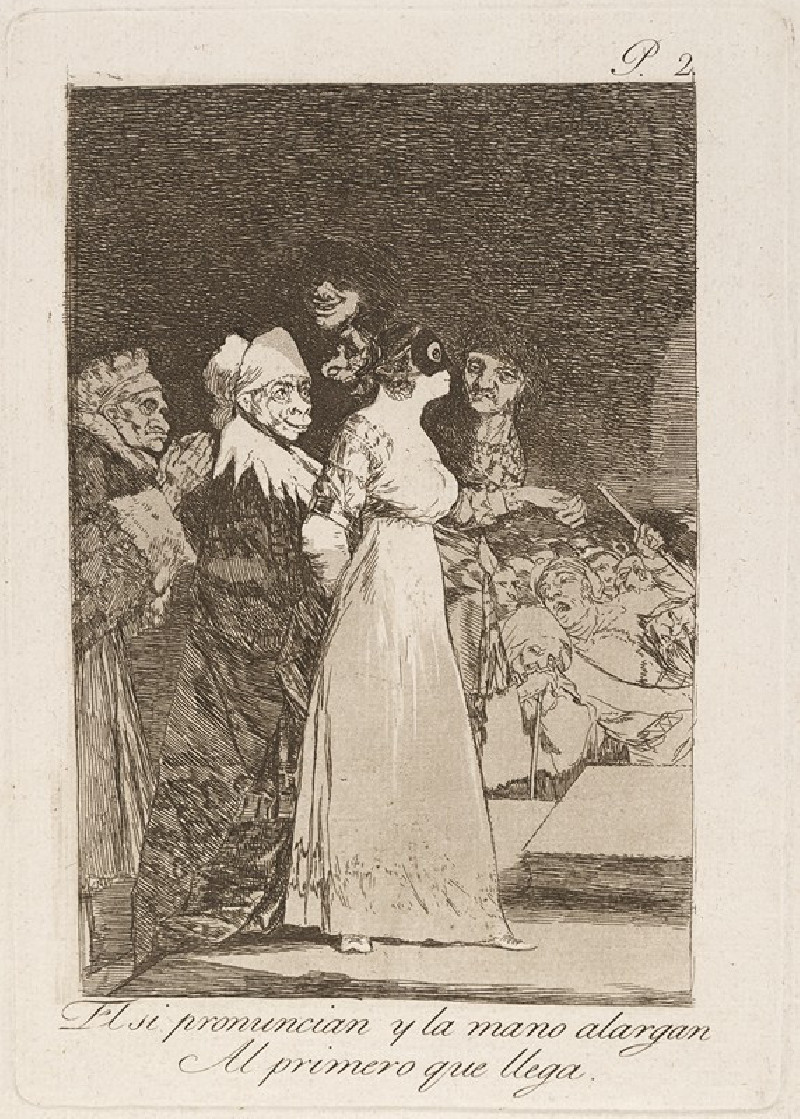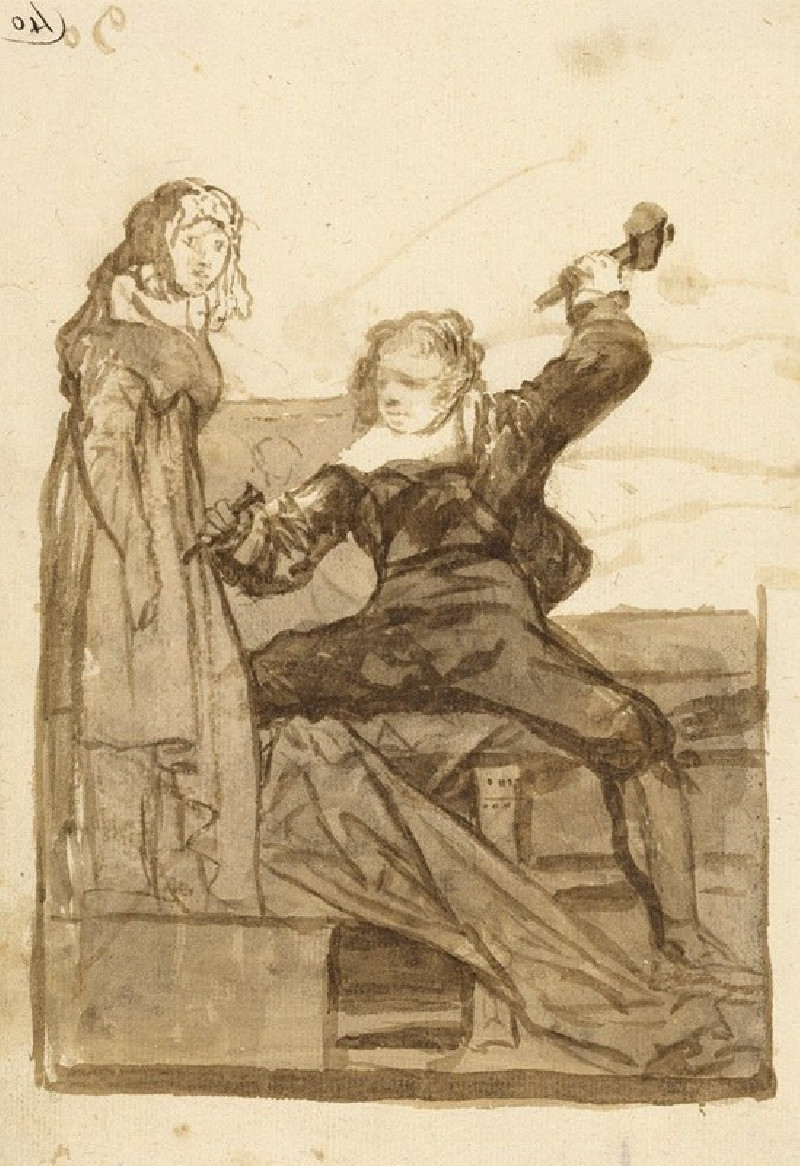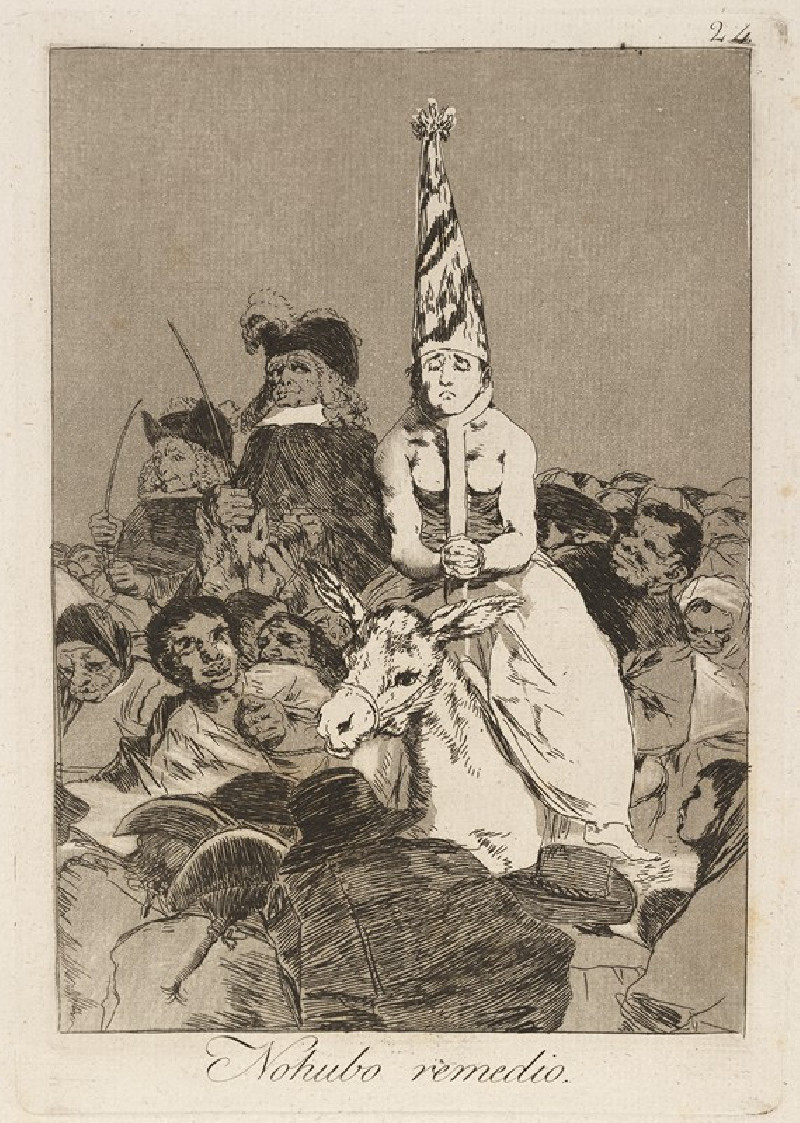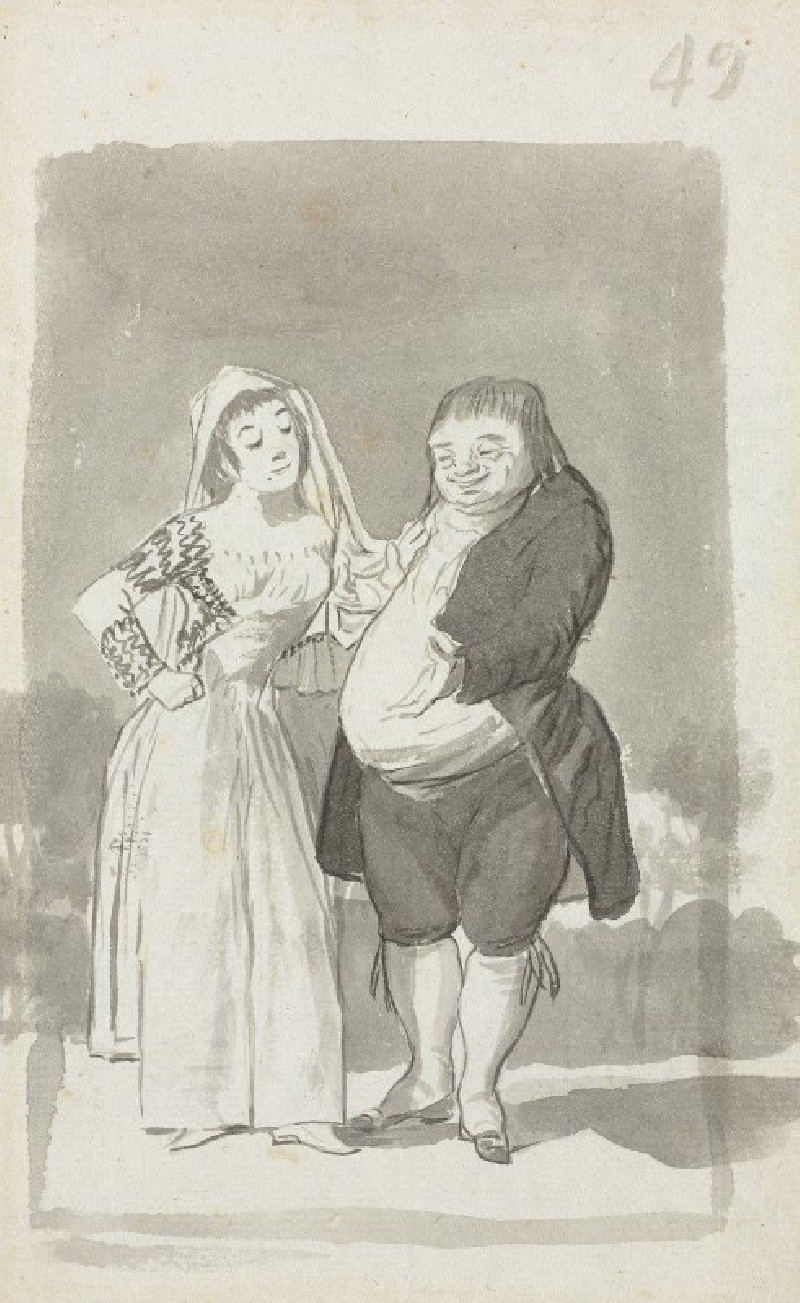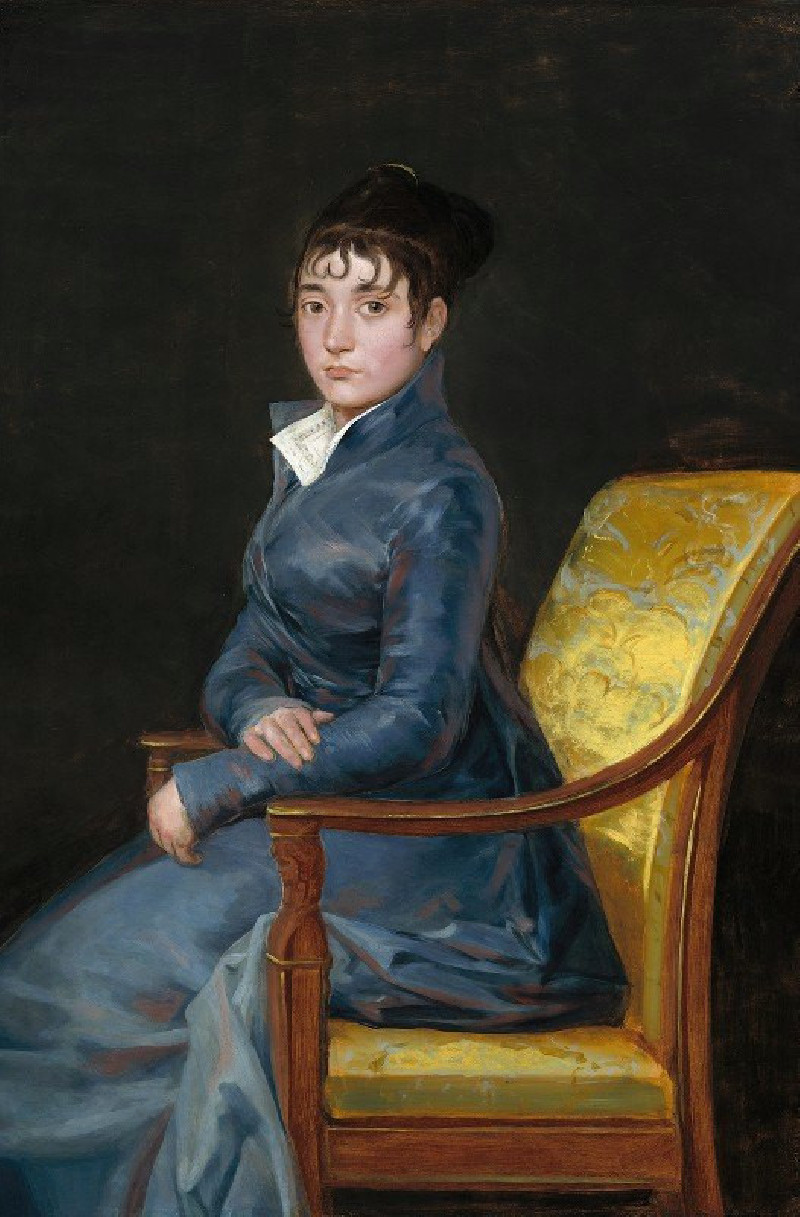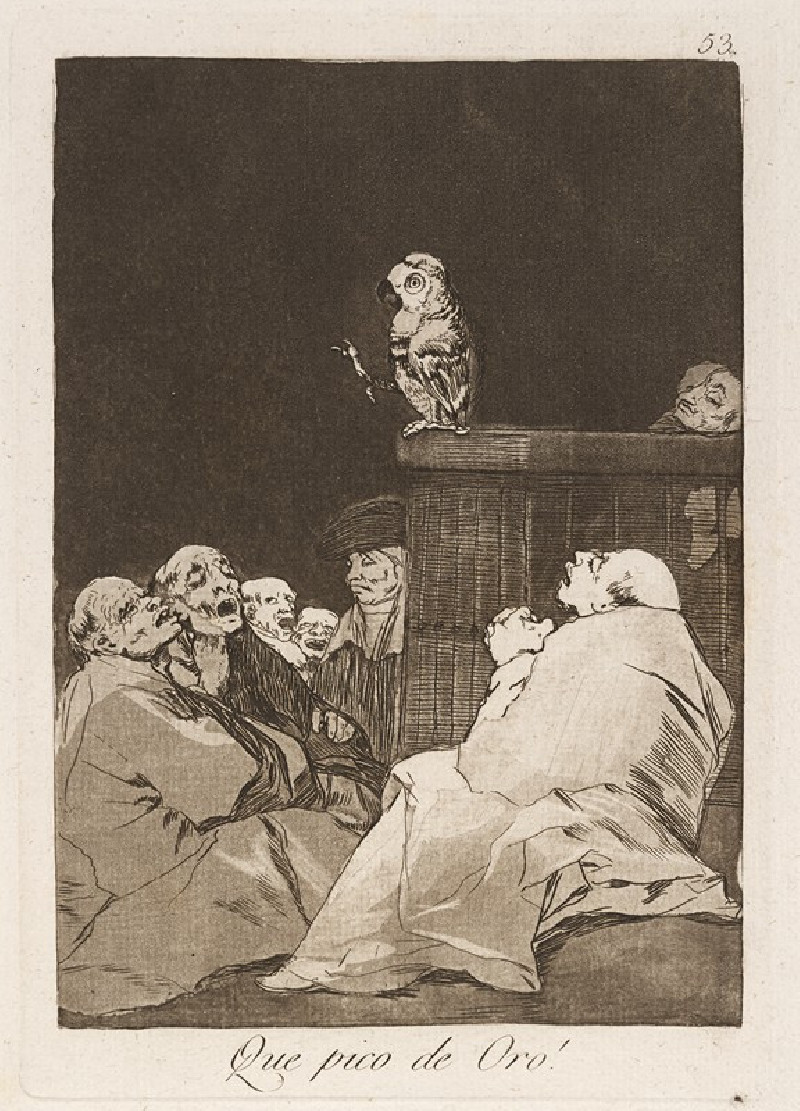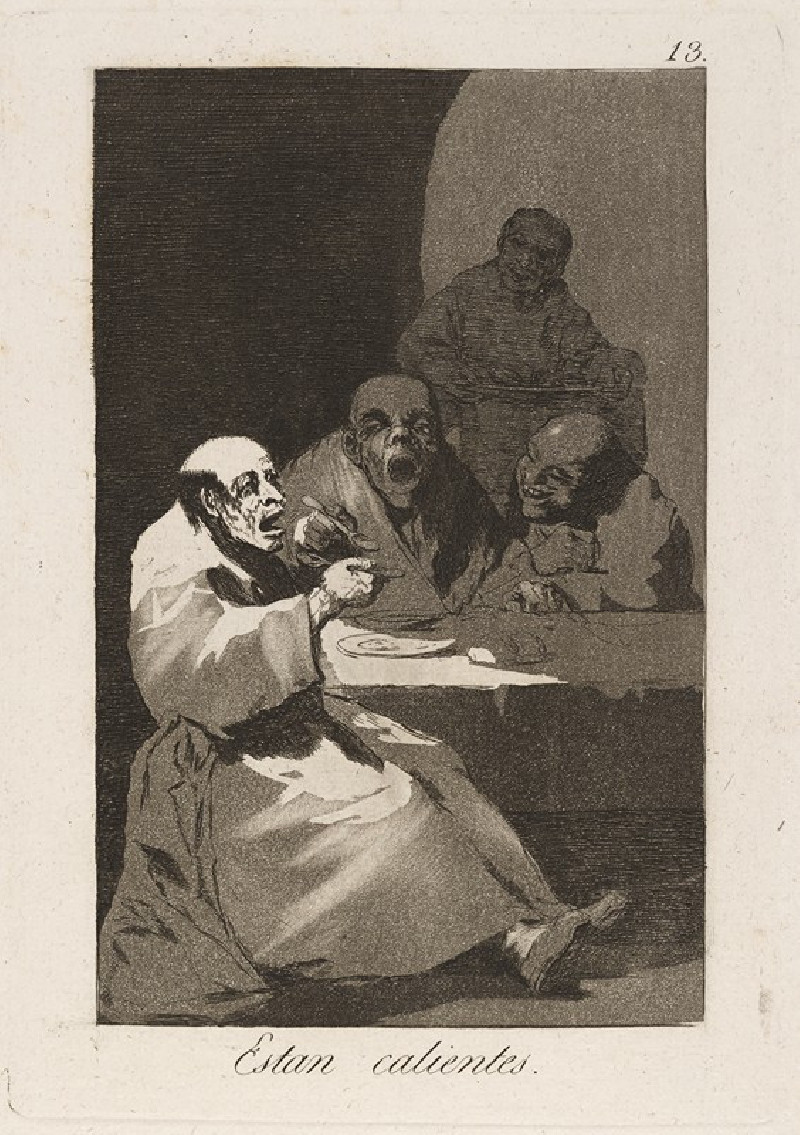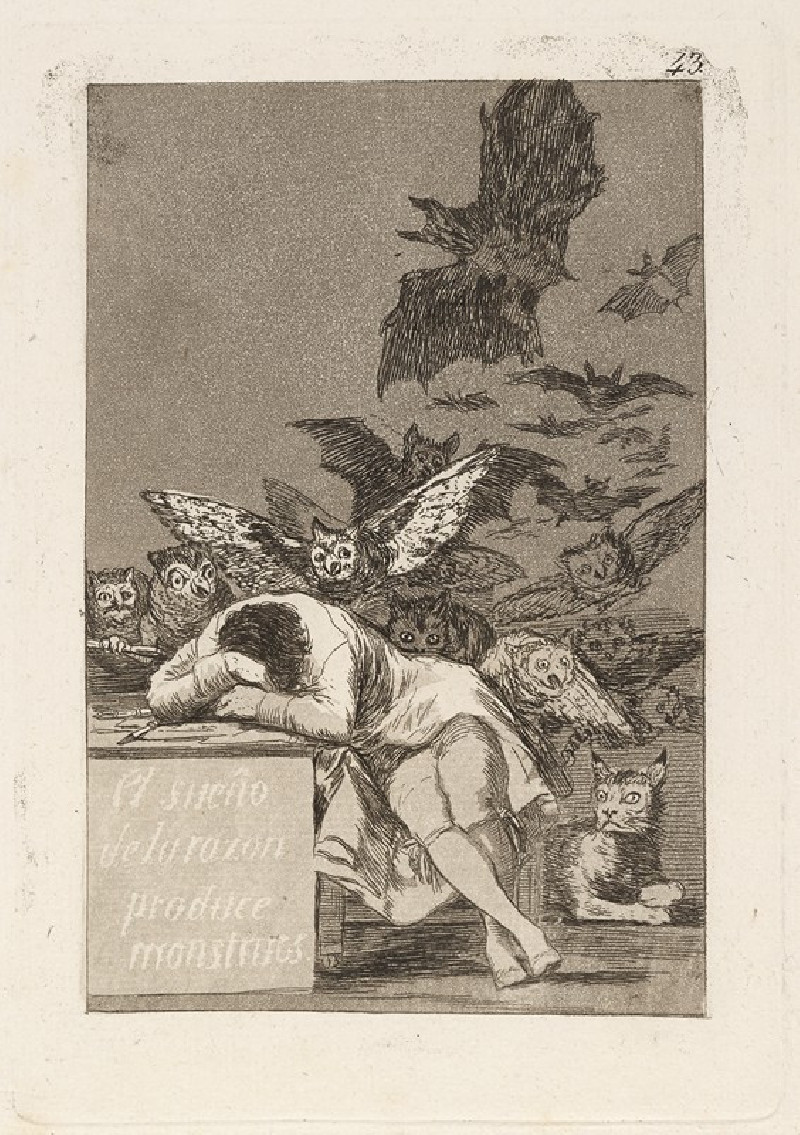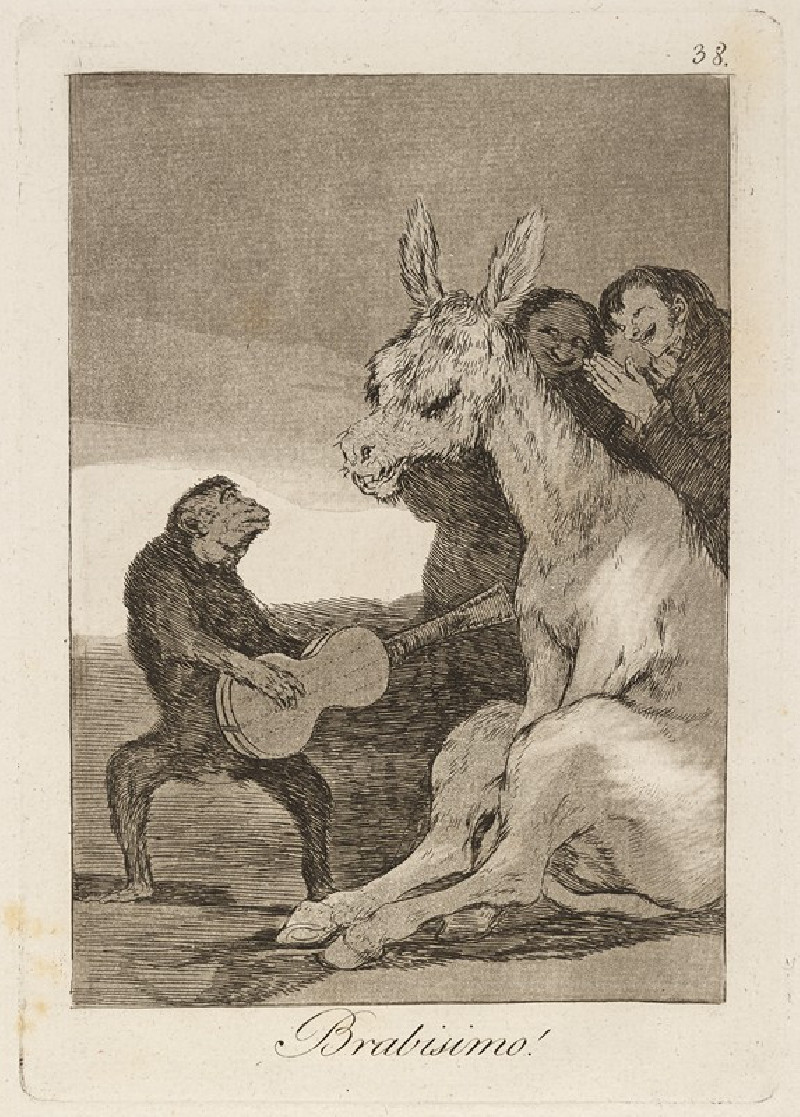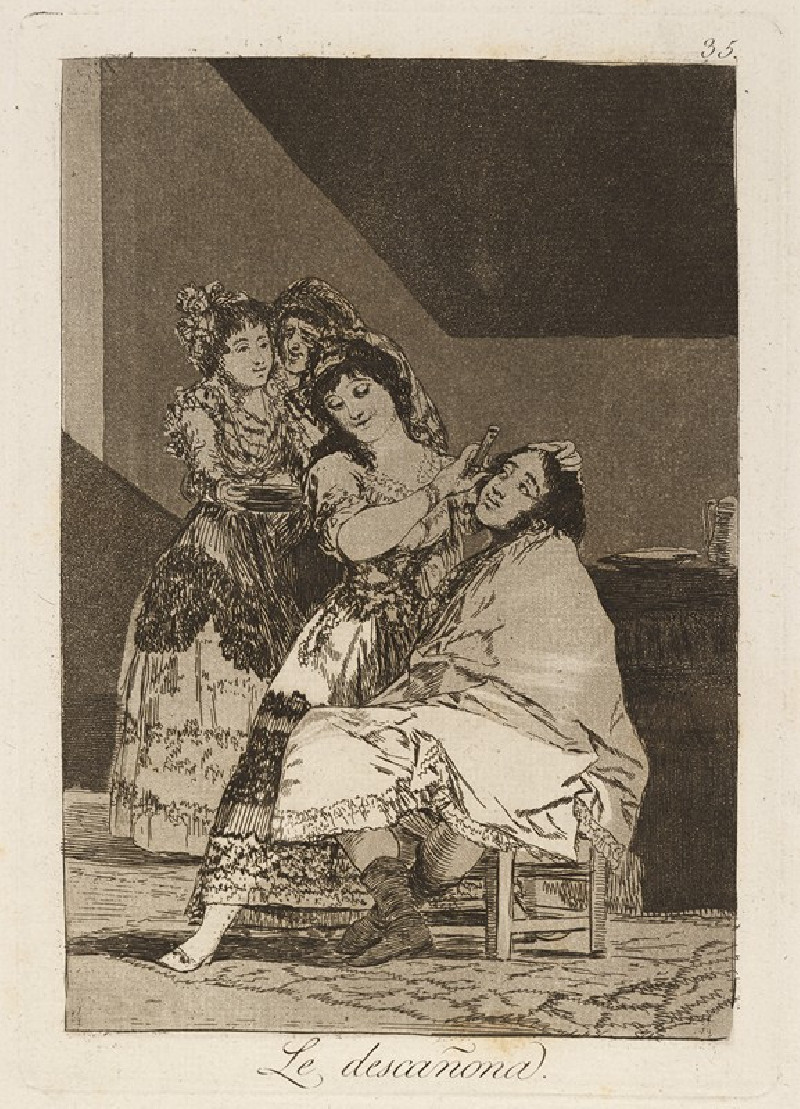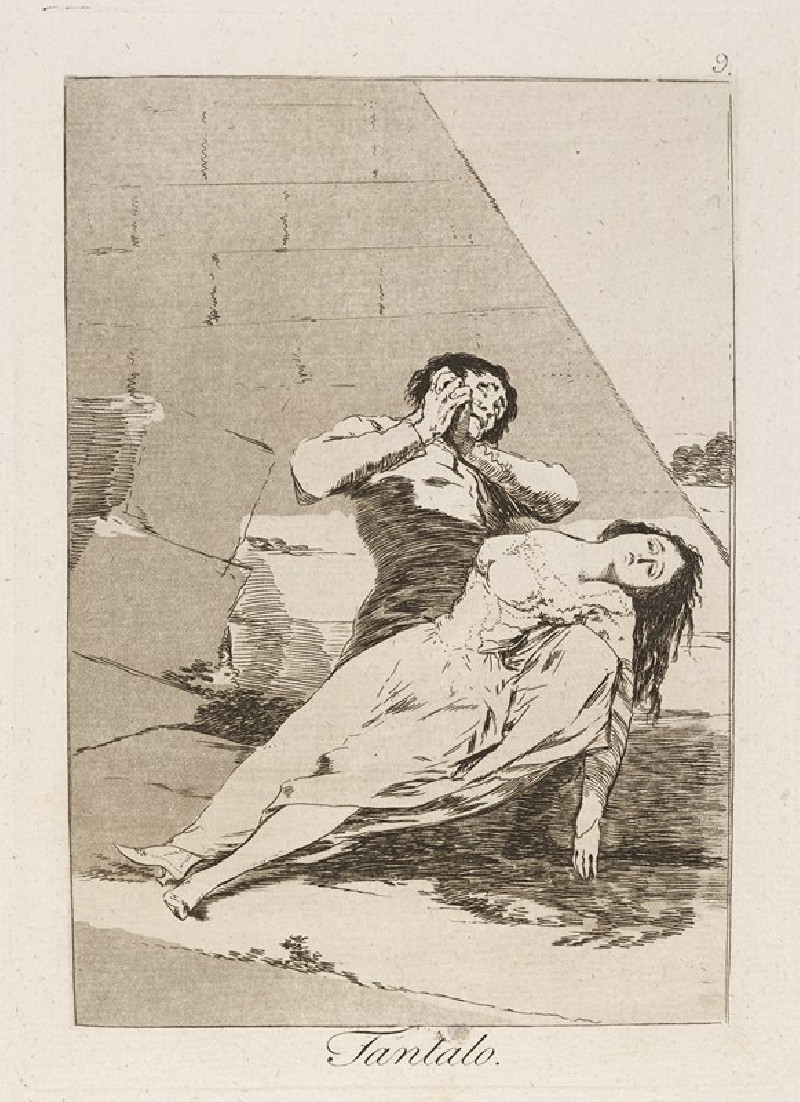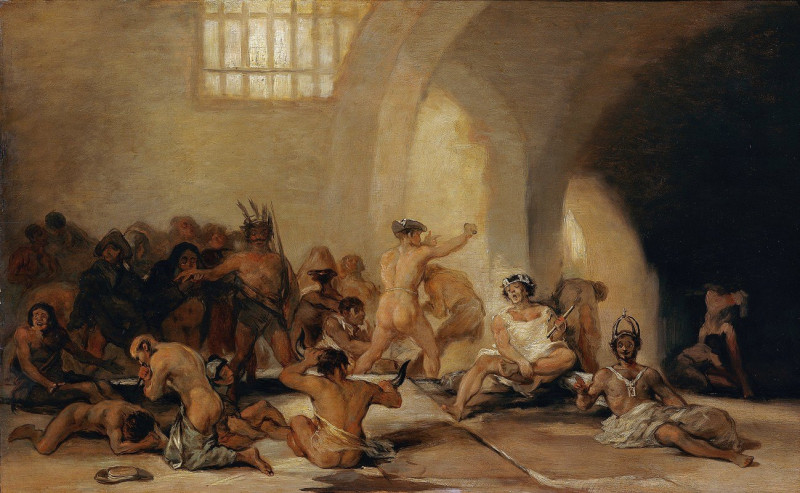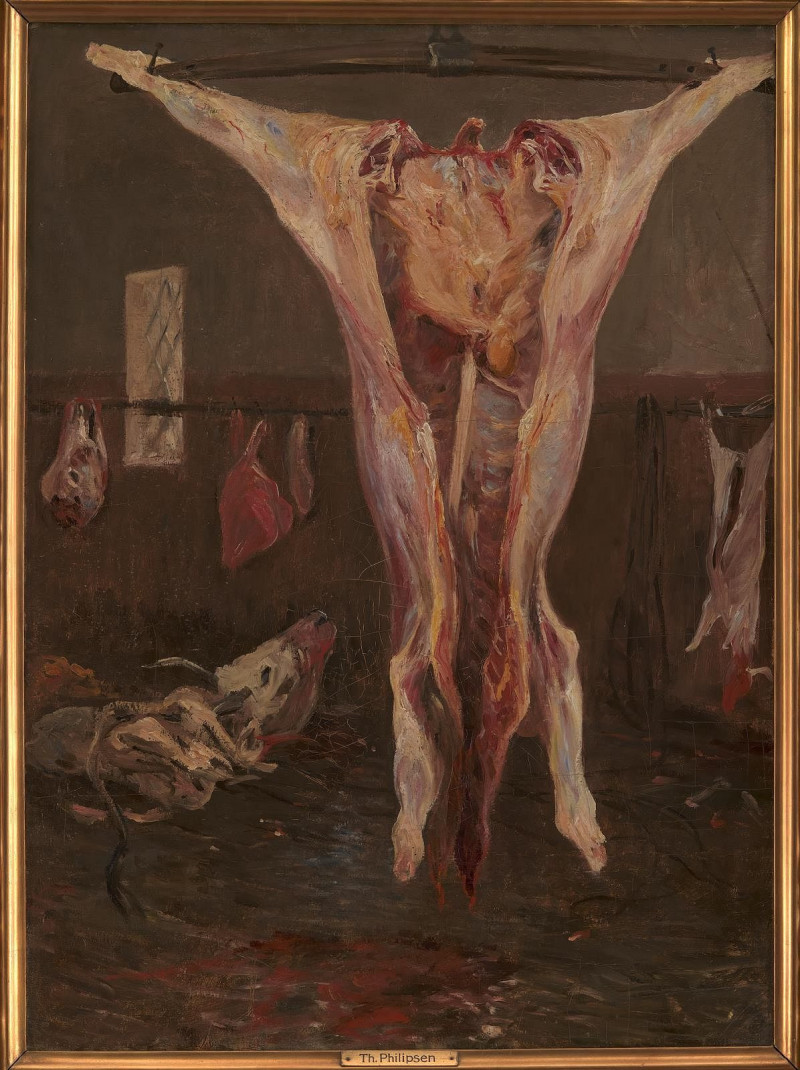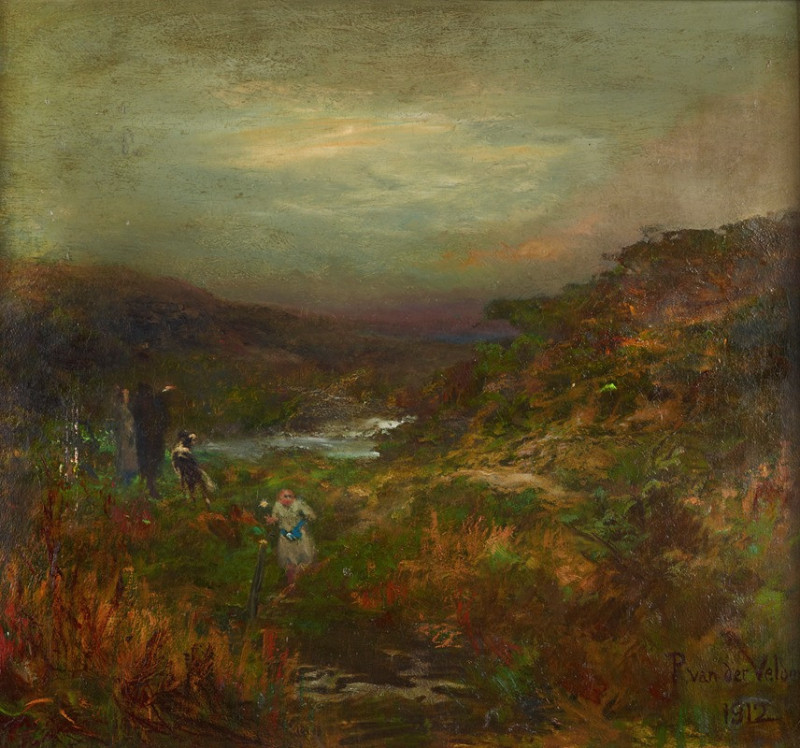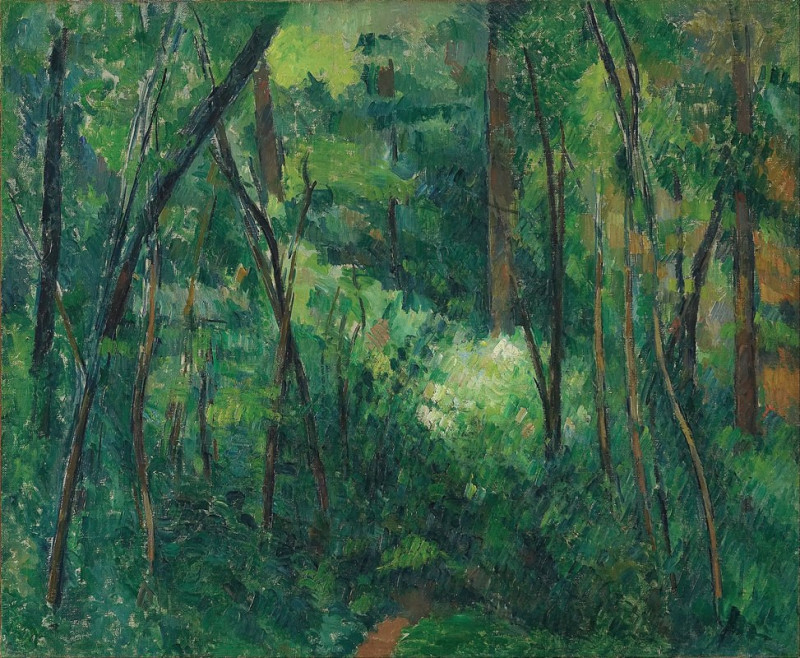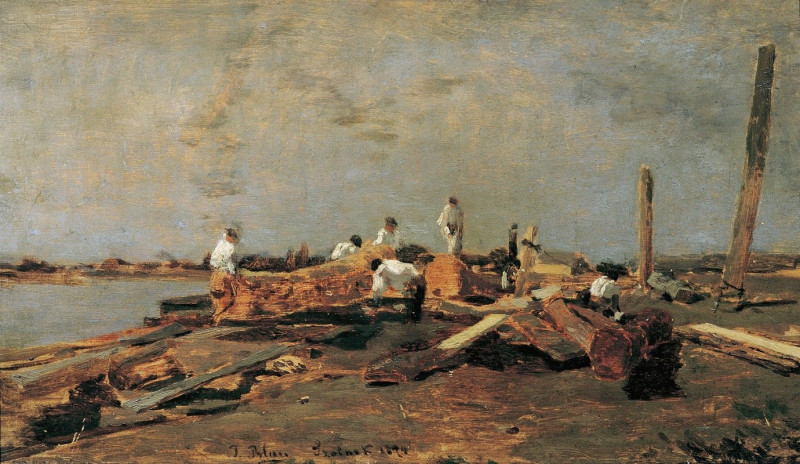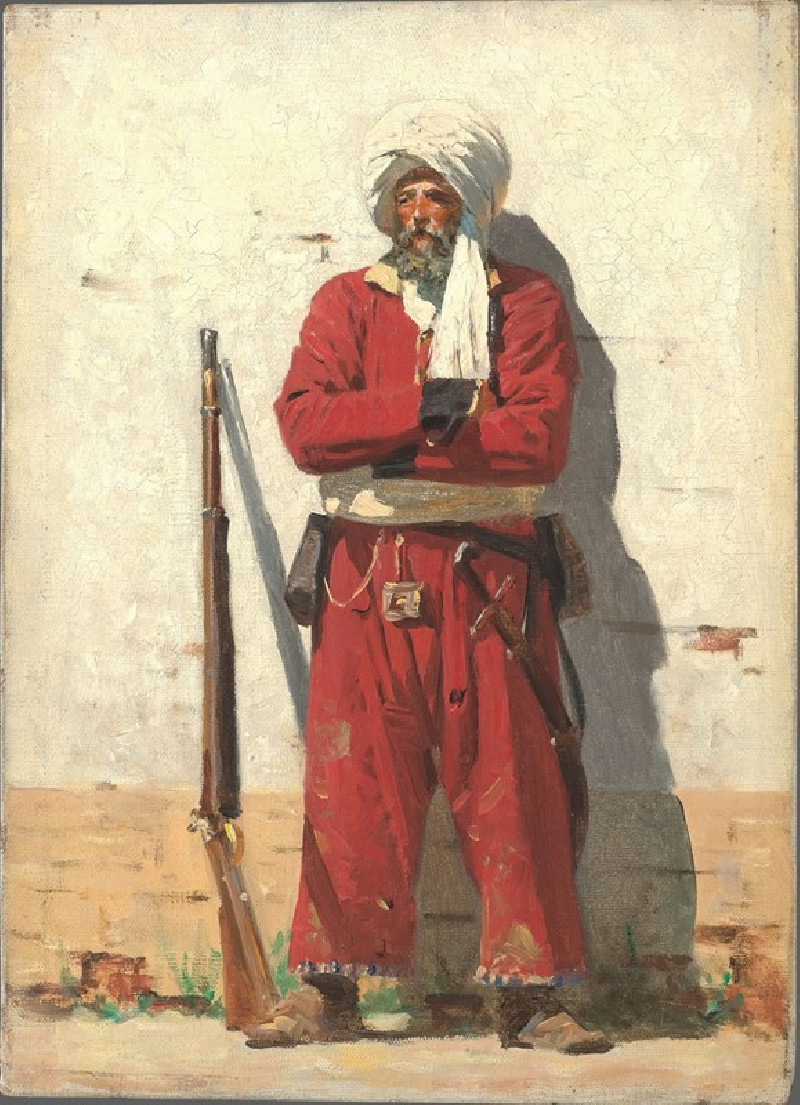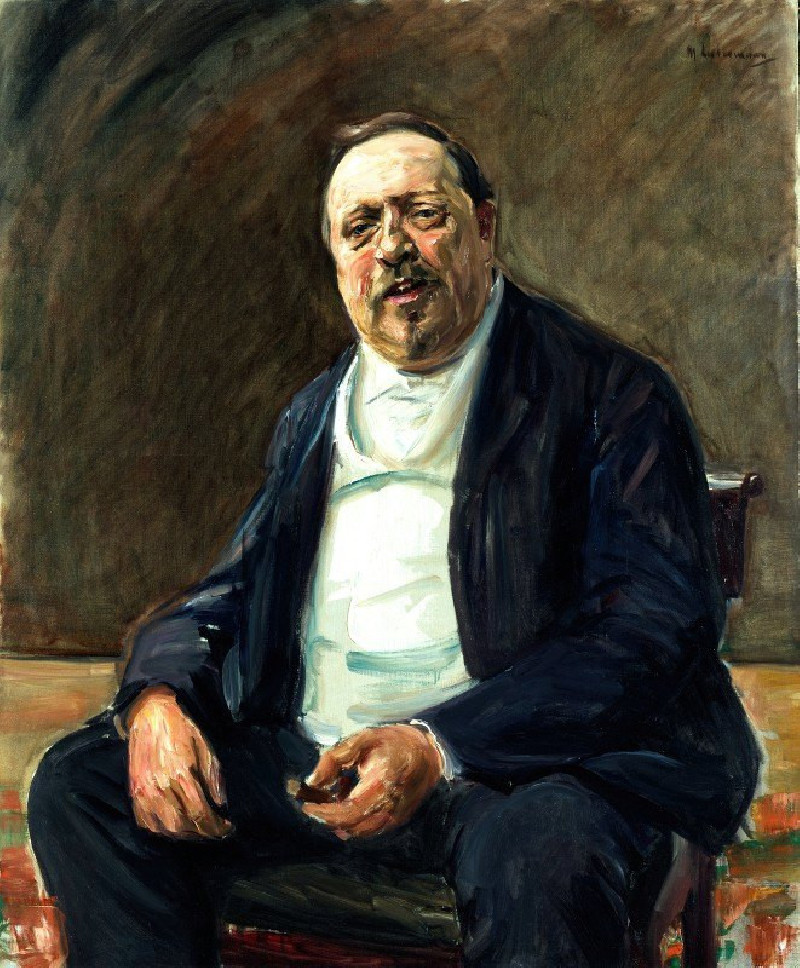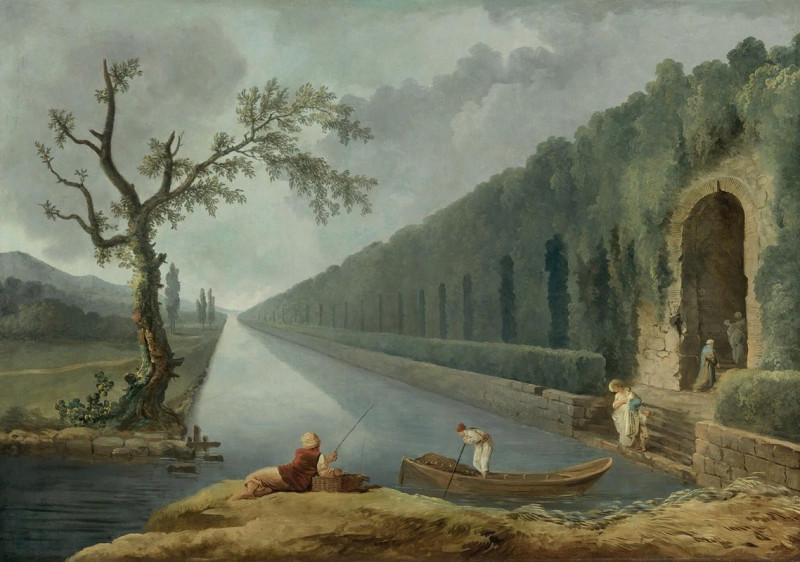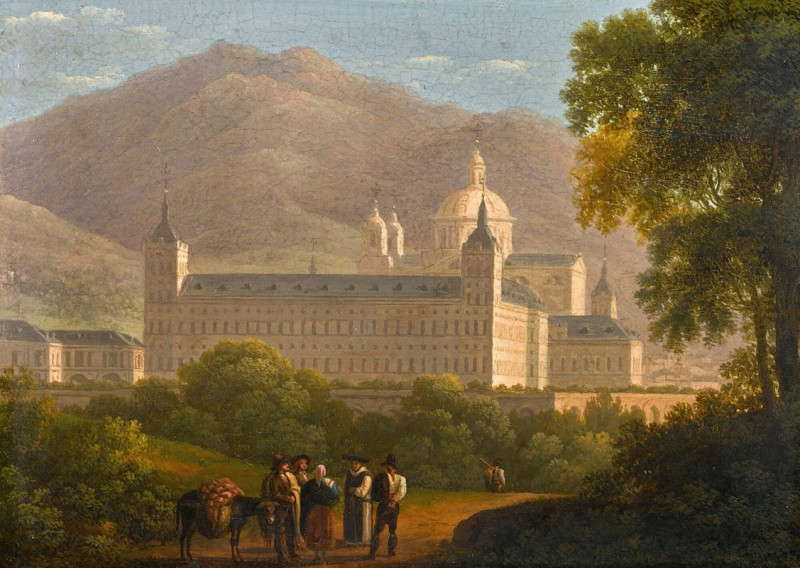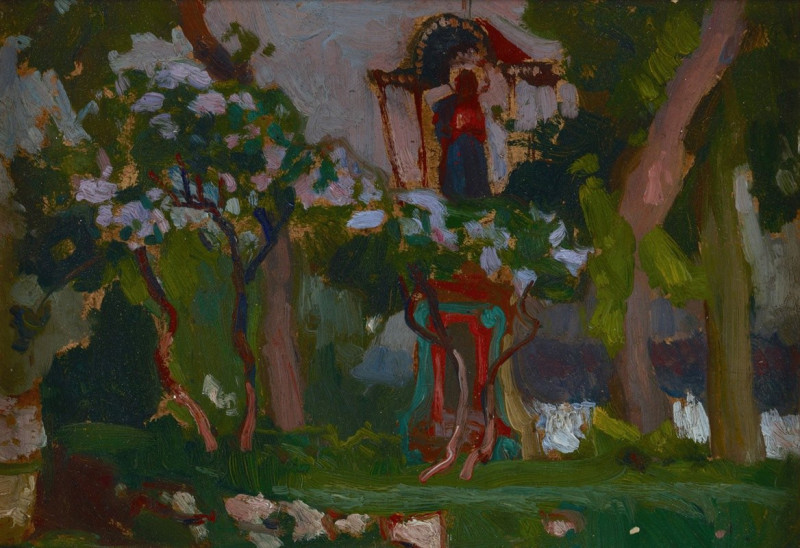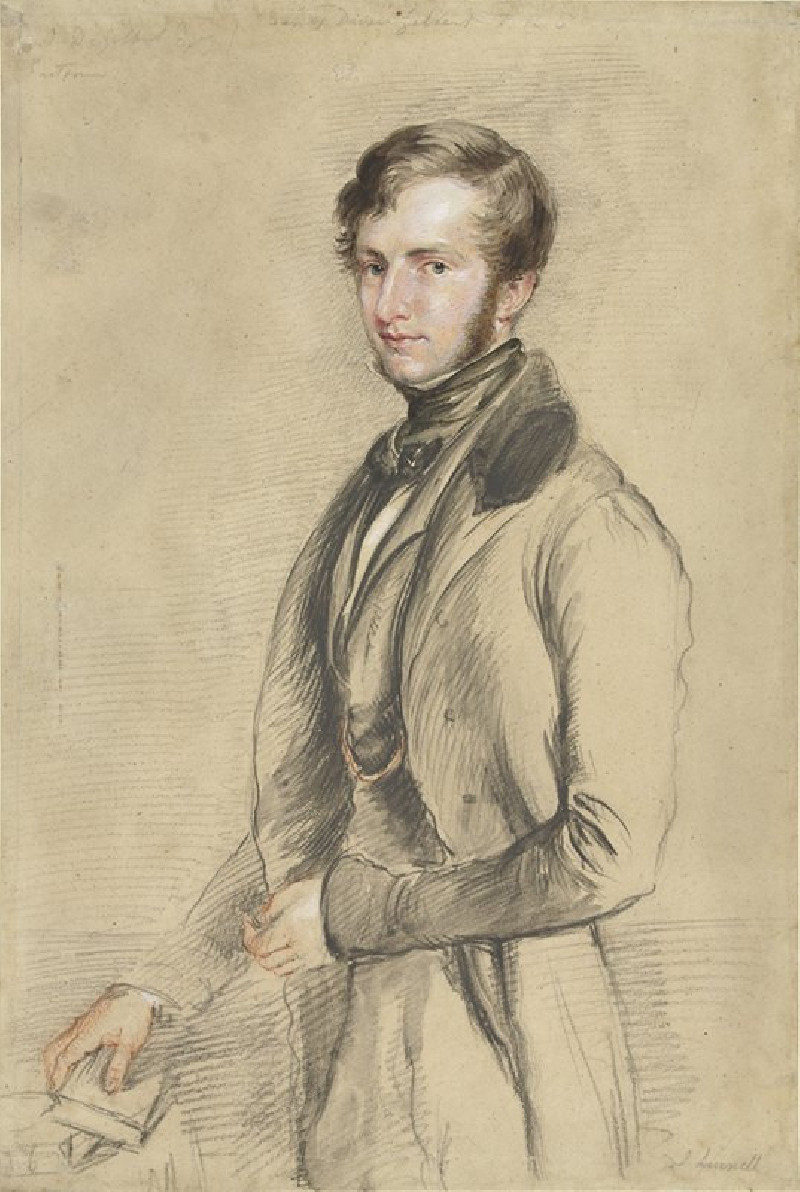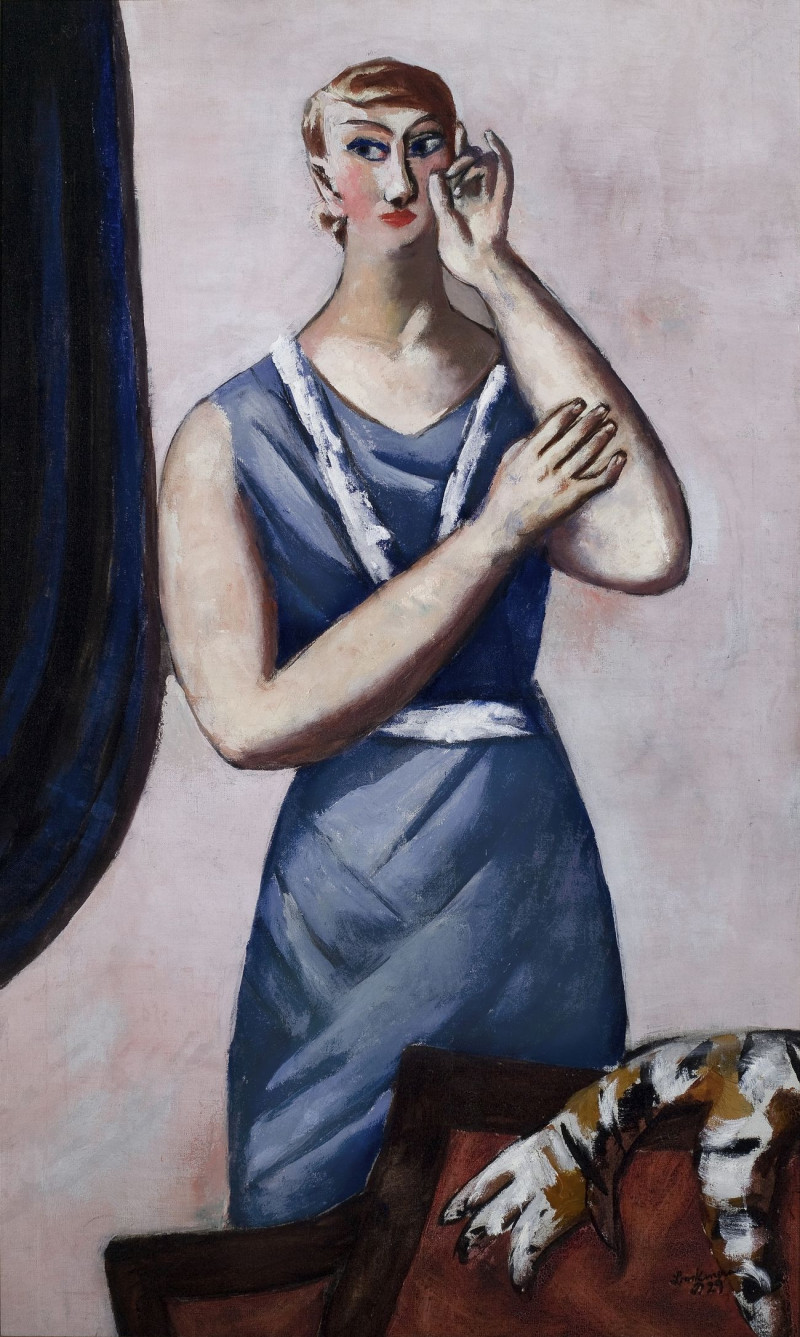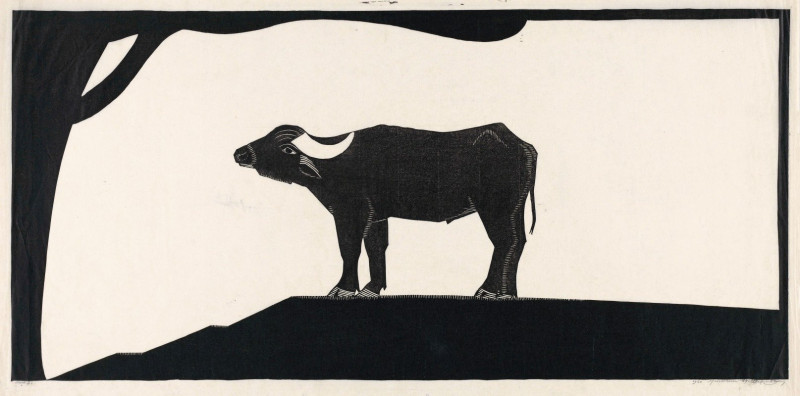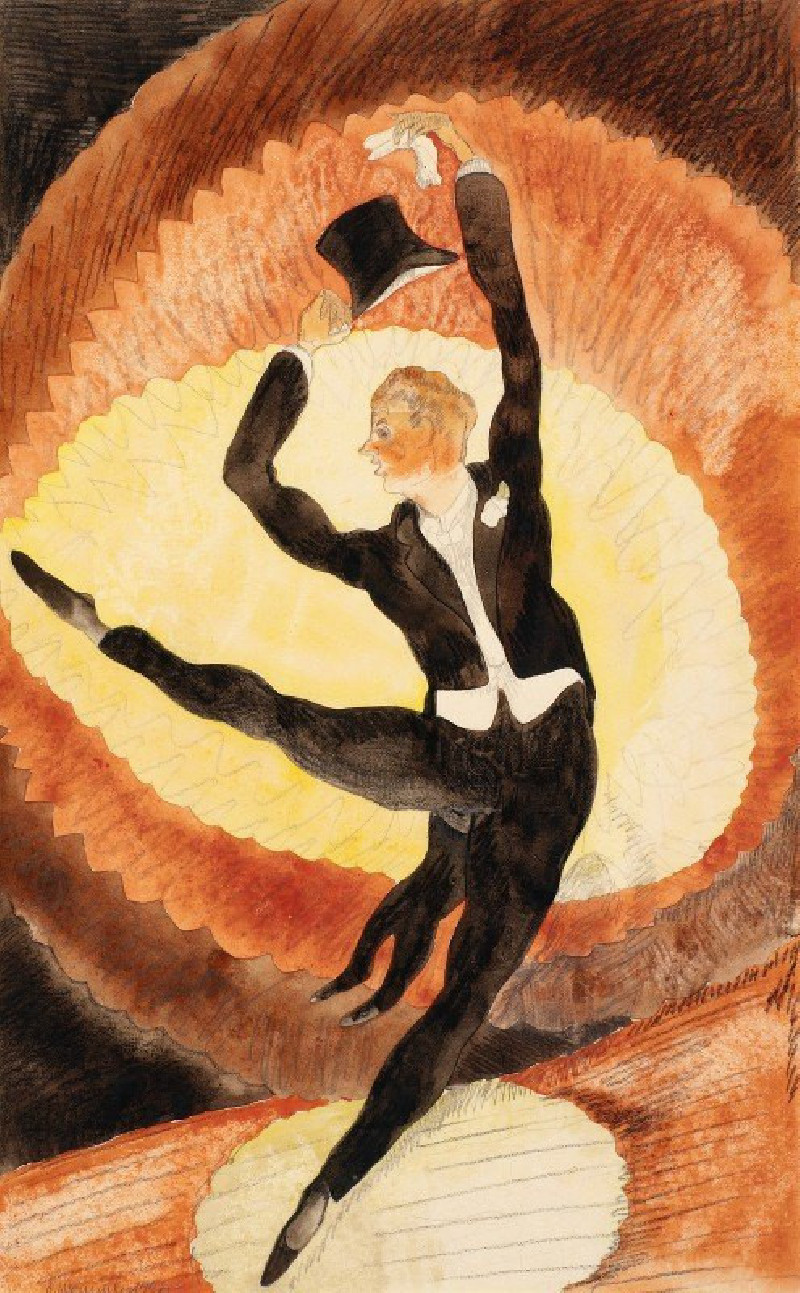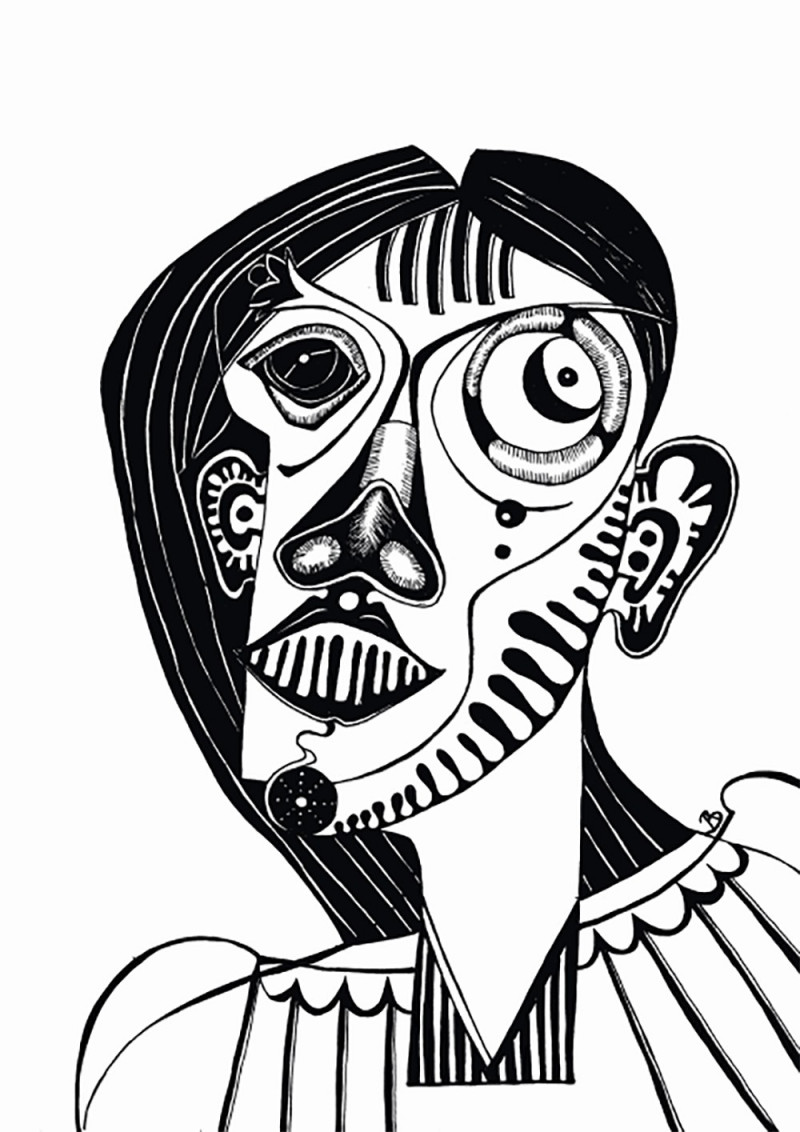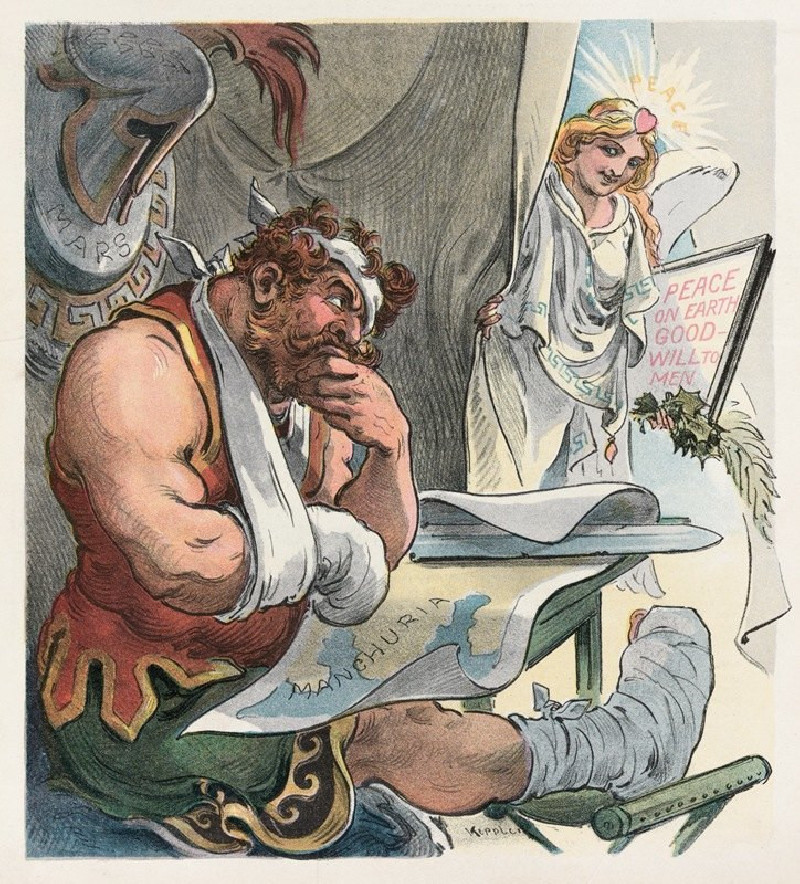After Vice Comes Fornication [Simpleton] (Tras el Vicio Viene el Fornicio [Bobalicón]) (ca. 1813-1820)
Technique: Giclée quality print
Recommended by our customers
More about this artwork
Francisco de Goya's evocative etching titled "After Vice Comes Fornication [Simpleton]" (Tras el Vicio Viene el Fornicio [Bobalicón]) from around 1813-1820 is a profound example of the artist’s penetrating insight into societal follies and personal vices. As part of his renowned series of engravings, Goya delves into the darker recesses of human nature and societal norms.This particular artwork depicts a grotesque and unsettling scene. In the forefront, a man wearing loose, flowing garments exudes an expression of manic glee, dancing or leaping with a perverse joy. His face, twisted in a grin, suggests both malice and foolishness. Behind him, we see another figure—perhaps a woman—engaged in a shrouded interaction with smaller figures, evoking a sense of vulnerability or exploitation. The shadows and somber tonality of the etching echo the themes of corruption and moral decay.Goya masterfully uses the interplay of light and dark to craft a chilling narrative that resonates with the viewer’s sense of ethical and moral judgments. The title itself, "After Vice Comes Fornication [Simpleton]", hints at a consequential relation between moral corruption and subsequent debasement, rendered through the lens of Goya’s critical eye.This piece serves not only as a striking work of art but as a commentary on the inevitable descent into depravity that follows the surrender to lesser impulses.
Delivery
Returns
Francisco José de Goya y Lucientes (30 March 1746 – 16 April 1828) was a Spanish romantic painter and printmaker. He is considered the most important Spanish artist of the late 18th and early 19th centuries. His paintings, drawings, and engravings reflected contemporary historical upheavals and influenced important 19th- and 20th-century painters. Goya is often referred to as the last of the Old Masters and the first of the moderns.

